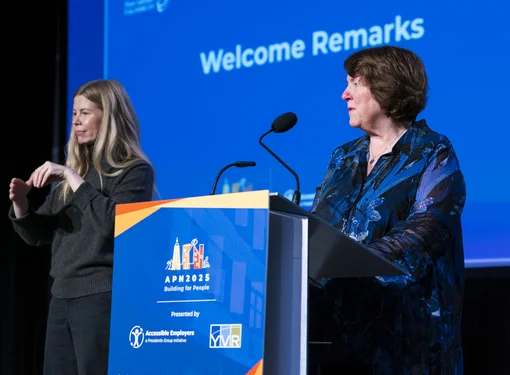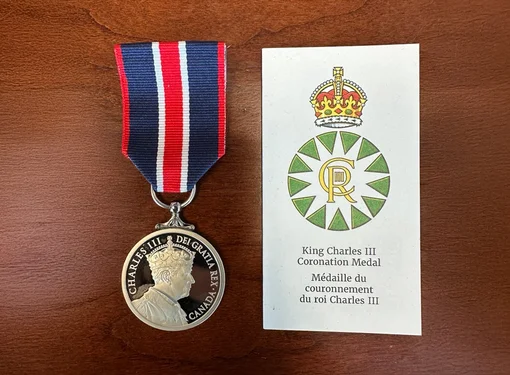The Power of Pronouns: Another Step Toward Building a More Inclusive Society
The evolution of the English language is a topic that never fails to spark debate among language lovers. Those who hold a deep affection for its richness and intricacies often find themselves instinctively reaching for a red grading pen, ready to defend the language from perceived declining standards. I admit to cringing at the trend of inserting the preposition “of” following the word “myriad” even though it’s becoming more commonly accepted. Don’t get me started on the absence of the Oxford comma. Text shorthand? No comment.
But language is a living beast; evolution is part of the game. The basic rules remain the same – verbs tell us what someone is doing, nouns refer to a person, thing, animal, place, etc., and of course, pronouns are words that can be used as a substitute for another noun or name when it’s clear whom or what is being spoken about. And, of course, there is a whole pile of other rules around pronunciation, spelling, grammar, and nuances.
Ultimately, the English language reflects the preferences and cultural contexts of its speakers, including today’s usage of declaring one’s pronouns (a note here on evolution: there has been a shift away from the term “preferred gender pronoun” as a person’s pronouns are not just preferred and pronouns do not always reflect gender).
If you use email in your regular communications, you may have noticed that the sender sometimes includes their pronouns followed by their name and before their title (if you don’t already do this yourself).
You probably read that sentence without even noticing the usage of the word “their.” It is a pronoun of indefinite gender and indefinite number but is increasingly used in its singular sense form. This is one of the reasons “their,” along with “they” and “them,” has emerged as a common choice for gender-neutral pronouns.

Some people prefer “ze/hir,” which was brought into the mainstream in Kate Bornstein’s 1996 novel Nearly Roadkill. Others might prefer neopronouns (“xe/xem” or “ze/zim”), rolling pronouns (multiple sets of pronouns), or avoid pronouns altogether. When in doubt, ask: “How may I address you?”
Many organizations are encouraging their employees to use their pronouns in communications, such as email signatures, as it helps create a workplace culture that is inclusive and welcoming for all. Here at the Rick Hansen Foundation, the leadership team and employees believe in the power of diversity, equity, and inclusion. Thus, many believe that sharing pronouns is one of the many ways to show respect and inclusion for friends and colleagues of various identities.
However, providing space for people to share pronouns does not mean everyone needs to. People may be questioning their own pronouns or don’t feel comfortable sharing. It is also important to avoid misgendering, which is the experience of being labelled as a gender other than the one that person identifies with. If you accidentally use the wrong pronoun, it’s always good practice not to make a big fuss, apologize, and immediately use the correct pronoun moving forward.
Missing In Action
To understand where we are, we can look at the past. Pronouns outside of “he” and “she” have a long and well-documented history. English speakers have always needed a way to refer to people when the subject’s gender was unknown, irrelevant, or not reflected by “he” or “she.” Centuries ago, the word “they” was introduced as a gender-neutral way of referring to an individual. The first record of the singular “they” was recorded in William and the Werewolf, a Middle English poem written in 1375, according to the Oxford English Dictionary.
The singular “they” was also used in The Canterbury Tales, Shakespeare’s Hamlet, and Pride in Prejudice. Like the singular “they,” it was a common way to identify a person whose gender was indefinite (some medical texts in the 1600s referred to people as “they/them” who did not fit into binary gender standards). Then the male pronoun gained traction with “he” overtaking the usage of “she” and “they” during the 18th century. It was common practice to use masculine pronouns to include all people; you may have come across this in a legal document during your lifetime.
But people have long since advocated for a genderless pronoun. In an 1884 story that appeared in the New-York Commercial Advertiser, it made a case for the pronouns “ne,” “nis,” “nir”, and “hiser.” The writer of the article wished for a new gender-neutral third-person singular pronoun to get away from the cumbersome use of “he or she,” “his or her,” and “him or her.”
Another call for a gender-neutral pronoun appeared in the Memphis Free Trade in 1882, rejecting the masculine in reference to a woman and the “clumsy circumlocution ‘he or she.’” This history is all from the book called What’s Your Pronoun? Beyond He and She by Dennis Baron. Baron, a professor emeritus of English at the University of Illinois at Urbana-Champaign, also writes that English speakers have proposed 200-250 pronouns since the 1780s.
Not a Novel Concept
Pronouns have a fascinating historical context, as they reflect humanity’s persistent quest for a more inclusive and effective means of addressing this gap in the English language. While not all pronouns are accompanied with interesting tales before they fizzled out, some are. Take, for instance, the story of the pronoun “co,” invented by a New York feminist named Mary Orovan. The usage of “co” during the 1970s began as a way to refer to somebody whose gender was unknown and later evolved to embrace nonbinary individuals to provide a platform for their recognition and inclusion.
And so, we find ourselves in the present day with an understanding that using pronouns is not an entirely novel concept. Using gender-neutral pronouns is not simply a linguistic trend but a crucial step toward fostering a genuinely inclusive society.
As we progress toward greater acceptance and understanding of all people and their various intersections, let us embrace the power of language to help create a more equitable world.







